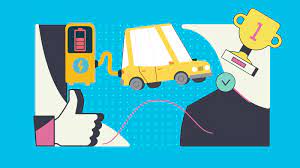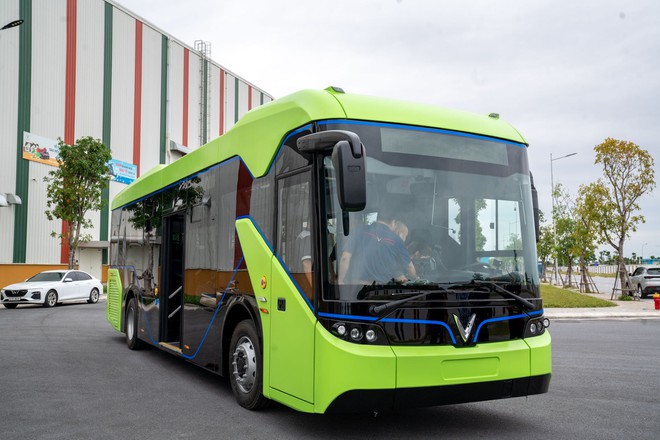What is IP57 or IP67 standard on e-scooters?
Nowadays, “water resistant", "waterproof" or "dustproof" are becoming popular terms and to prove this, manufacturers often refer to such standards as IP57, IP67 or IP68. But what exactly does IP standard mean?
The lifespan of an electrical or electronic device is highly dependent on the weather conditions as well as the environment where it is used. That’s why in practice there should be a common standard for electrical and electronic products, to see their resistance to water and dust.
Protection against dust and liquids
Any liquid or solid object entering an electronic equipment causes damage ranging from shortened usable life to ultimately rendering the equipment useless.
Dust is capable of hiding and accumulating inside the sockets, ports, and other in-betweens of electronic products. If dust builds up excessively, it may build up to form an insulating layer that causes the circuits to overheat. If the dust or dirt inserts itself between contacting surfaces, poor conductance may occur creating problems for switches, relays, and connectors.
Meanwhile, moisture, and humidity are sworn enemies of electronics, especially with delicate microcircuits. In addition, products that must be operated outdoors such as e-scooters, headsets for cell phones need to have certain water resistance, whether in heavy thunderstorms or light drizzle.
Furthermore, for vehicles such as e-scooters or electric cars, the problem is that they definitely need to be washed with water causing them to become the subject of high-pressure cleaning equipment. Therefore, in addition to resistance to wind and rain, these products also have to withstand water pressure for a certain period of time.

Humid environments can also cause condensation in internal components of electrical equipment. If the power is applied before this condensation can evaporate, short circuits can cause failure.
Finally, exposure to harsh chemicals, surfactants, or cleaning liquids can have a corrosive, damaging effect on electronics and circuitry. Any electrical device includes compounds made of copper, aluminum, and silver which are particularly susceptible.
What is IP rating?
It is very easy to be confused with the Internet Protocol, the IP mentioned here is the Ingress Protection rating established by the International Electrotechnical Commission (IEC), which is based in Geneva, Switzerland, to assess a device's dust and water resistance. This rating is growing in popularity as consumer electronics devices become more portable, with an emphasis on smooth operation even outdoors.
The IP code combines two numerals, for example IP57, IP67 or IP68. The first numeral of the IP Code indicates the device's protection level against dust and solid objects. The second numeral rates the enclosure’s protection against liquids.
IP rating is only officially given to a product that undergoes special testing by a IEC certified, independent company. Therefore, no manufacturer can self-label IP ratings for their products.
First numeral
The first numeral refers to the protection against solid objects and is rated on a scale from 0 (no protection) to 6 (no ingress of dust).
IP0X: The product is not protected from any physical or physical impact.
IP1X: Protected against solid objects over 50mm. You won’t accidentally stick your hand into this product, but you can still easily get your finger in if you want.
IP2X: Protected against solid objects over 12.5 mm. This is the standard of most home electrical equipment to protect consumers, especially children.
IP3X: Protected against solid objects over 2.5mm.
IP4X: Protected against solid objects over 1mm.
IP5X: Protected against dust - limited ingress. Some dust may get through, but it won’t be enough to damage the product.
IP6X: Totally protected against dust. This product is fully dust tight.

Second numeral
The second numeral rates the enclosure’s protection against liquids and uses a scale from 0 (no protection) to 9 (high-pressure hot water from different angles).
IPX0: The product offers no special protection from water.
IPX1: Protected against vertically falling drops of water and condensation.
IPX2: Protected against direct sprays up to 15o from the vertical, tested in rain conditions of 3mm per minute. This is typically applied to wireless headphones or smart watches to ensure that users can use them while jogging in the rain.
IPX3: Protected against direct sprays up to 60o from the vertical. A total of 50 liters of water are sprayed into the product at a pressure of between 50 and 150 kPa over a period of 5 minutes. If the product still runs well, it passes the test. Currently on the market there are many types of portable speakers that meet this standard.
IPX4: Protected against sprays from all directions - limited ingress permitted. The test will use a nozzle with the same flow rate as IPX3.
IPX5: Protected against low pressure jets if water from all directions - limited ingress permitted like IPX4. The difference is that the water jets sprayed from the nozzle are 6.3mm in diameter with a flow of 12.5 liters per minute.
IPX6: Protected against strong jets of water same as IPX5, but the nozzle is up to 12.5mm in diameter, and the water pressure is also stronger, with a flow of 100 liters per minute.
IPX7: Protected against the effects of temporary immersion. Product tests include temporary immersion up to 1 meter in water for about 30 minutes.
IPX8: Protected against long periods of immersion under pressure. The product can operate when immersed under a depth of more than 1 meter, and the exact depth is specified by the manufacturer. In other words, the product can completely operate underwater for a long time.
IPX9K: This is a very special case that’s dictated by a separate standard and rarely used. It confirms that the product can withstand extremely high pressure water flows as well as high temperatures. The test will use a hot water flow of 80 degrees Celsius, sprayed from a distance of 0.1-0.15 meters with a pressure of 8-10 MPa.
It's worth noting that a 9K rating doesn't mean the product has all previous water resistance levels. If a device reaches IPX9K rating, it can withstand high pressure water currents but that doesn't mean it can work underwater.

An IP rating, then, combines the solid and liquid rating numerals to show water and dust resistance of a device. For example:
- IP57: The device is dust tight at level 5 (some dust may get through, but it won’t be enough to damage the product) and waterproof at level 7 (protected against the effects of temporary immersion)
- IP67: This product is fully dust tight and can be temporarily submerged in water for 30 minutes.
- IP68: This product is fully dust tight and can be continuously submerged in water for a long time.
VinFast e-scooters all meet the IPX7 waterproof standard to suit operating conditions in Vietnam. Ludo and Impes models reach IP57 rating. Some dust may get through, but it won’t be enough to damage the product and the e-scooters can run through 0.5 meter submerged roads in 30 minutes.
Meanwhile, Klara S, Feliz and Theon models meet IP67 rating. They are fully dust tight and can also operate normally when submerged 0.5 meters for 30 minutes.




































